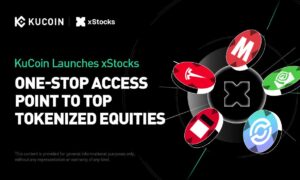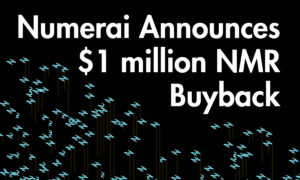Retail investors are demanding value from brokerages like never before. Commission-free trading, robo-advising, and top-notch user interfaces have become fundamental to the online investing experience.
We have been asked by readers to compare M1 Finance vs Sofi, two of today’s most beloved retail brokerages. Read on to find out which brokerage is best for you.
M1 Finance vs SoFi Features
Both brokerages are jam-packed with features to help you build and manage your money, but when it comes to M1 Finance vs SoFi, who offers more?
SoFi Features
SoFi Automated Investing
SoFi Invest is the multi-tool of online brokerages, offering an incredible array of services and account types. Their Automated Investing feature was ranked #1 in Barron’s Top Robo Advisors 2021—enough said. Complete a survey about your financials, risk tolerance, and goals, and SoFi’s algorithm tailors a custom portfolio to help you reach your financial goals.
SoFi Commission-Free Trading, Crypto, & Fractional Shares
For the seasoned trader, SoFi’s Invest platform includes an active investing interface with the beloved commission-free trading. The brokerage stays competitive by offering on-platform crypto trading and fractional shares.
SoFi Pre-IPO Investing
We love SoFi because of their pre-IPO investing options, allowing investors to get in on the action once reserved only for institutions. Pre-IPO investing is a game changing feature that not even M1 Finance has been able to contend with.
M1 Finance Features
M1 Finance Automated Investing
M1 Finance’s portfolio deign is certainly less intensive than SoFi’s. Rather than curating a tailored portfolio, M1 Finance offers 80 Expert Portfolio allocations that users may duplicate at their leisure.
M1 Finance does offer automation of contributions and rebalancing. But if you’re a beginner investor, stick to SoFi’s curation algorithm.
M1 Finance Fractional Shares
Like SoFi, M1 Finance offers users the opportunity to purchase fractional shares. Fractional shares are an excellent tool for diversifying into assets that you
otherwise could afford. Fractional shares are also great tool for adding high- priced equities without sacrificing your allocation balance.
M1 Finance Crypto Trading
Unlike SoFi, M1 Finance does not allow users to trade cryptocurrency on their platform. Some popular coins such as Bitcoin and Ethereum can still be purchased via exchange-listed ETFs, but look elsewhere for a bona fide crypto marketplace. Comparing M1 Finance vs Sofi, this is a big strike against M1 Finance.
M1 Finance Pie
A prized feature of M1 Finance is The Pie. The Pie allows you to build a custom portfolio allocation on a percentage basis. Users can define rebalancing periods or use M1 Finance’s Dynamic rebalancing to maintain investments with cash deposits.
Don’t want to build your own Pie? Choose one of 80 premade M1 Finance Expert Pies. M1 Finance’s Pie is a truly remarkable tool for portfolio construction and maintenance.
M1 Finance vs SoFi Fees
They say diversification is the only free lunch in investing, and everything else costs money. Below, we’ll look at how M1 finance vs SoFi fees are structured.
SoFi Fees
SoFi Trading Fees
SoFi offers users the gold standard of today’s investing apps—commission-free trading. Whether you’re an active investor or using Sofi’s robo-advising, you won’t be charged a dime in brokerage fees.
The only fee you should expect to pay to SoFi is a $75 account migration fee if you ever decide to leave. But with commission-free trading, why would you?
SoFi Borrowing Fees
SoFi’s low-cost model is designed to get users in the door to cross-sell other investment products. SoFi offers student loans, mortgages, and seemingly everything in between. Their lending rates are generally unexciting but allow you to keep your finances in one place.
Whether or not you use SoFi’s lending, why not take advantage of free trading?
SoFi is starting to seem like a second free lunch…
M1 Finance Fees
M1 Finance Trading Fees
Like SoFi, M1 Finance offers commission-free trading for both automated and self-directed investors. The only fees you’ll pay to M1 Finance is for margin interest or lending products.
M1 Borrow
M1 Borrow is a one-of-a-kind feature delivering line of credit lending against M1 Finance client securities. In other words, it’s margin lending, withdrawable in cash!
This type of lending was traditionally reserved only for top-earners—and starting at just 2% interest, you’re certainly being treated like one.
M1 Finance vs Sofi: Our Pick
Both brokerages offer serious value to users. But, when we’re asked to choose between M1 Finance vs SoFi, our pick is SoFi.
With commission-free trading across the board, you can’t go wrong with either broker. The M1
Borrow program is a great option for investors whose investment portfolio lean towards securities. For investors who value convenience, SoFi’s breadth of lending services is difficult to beat.
The difference-maker between M1 Finance vs Sofi is in SoFi’s features and services. SoFi’s robo- advising curation process offers users curation that is leagues beyond M1 Finance’s Expert Pies. M1 Finance also flops on the exploding arena of crypto investing, which is booming in retail popularity day by day.
This article barely scratches the surface of what these two brokerages offer clients. Be sure to read a more in-depth modestmoney.com review of SoFi here and Betterment here.
Related M1 Finance Comparison Posts:
- M1 Finance vs. Webull
- M1 Finance vs. Vanguard
- M1 Finance vs. Fidelity
- M1 Finance vs. Robinhood
- M1 Finance vs. Betterment
- M1 Finance vs Charles Schwab
- M1 Finance vs SoFi Invest
- M1 Finance vs. Acorns
- M1 Finance vs. Wealthfront
Related SoFi Comparison Posts:



































